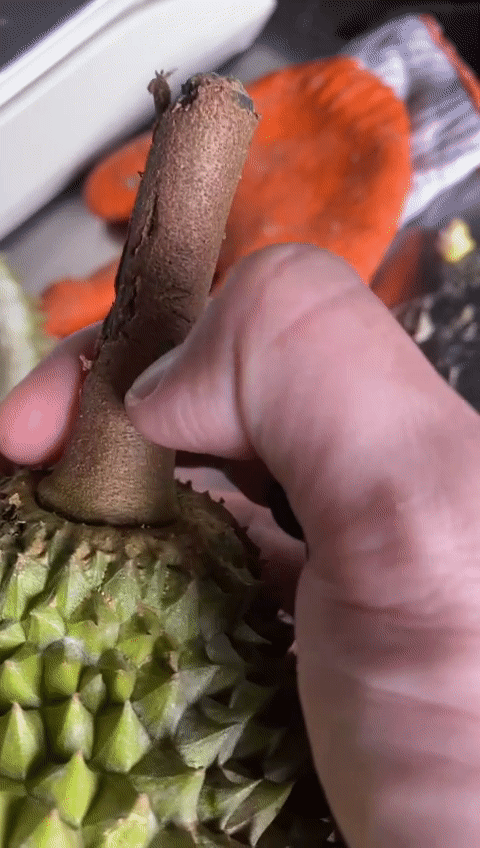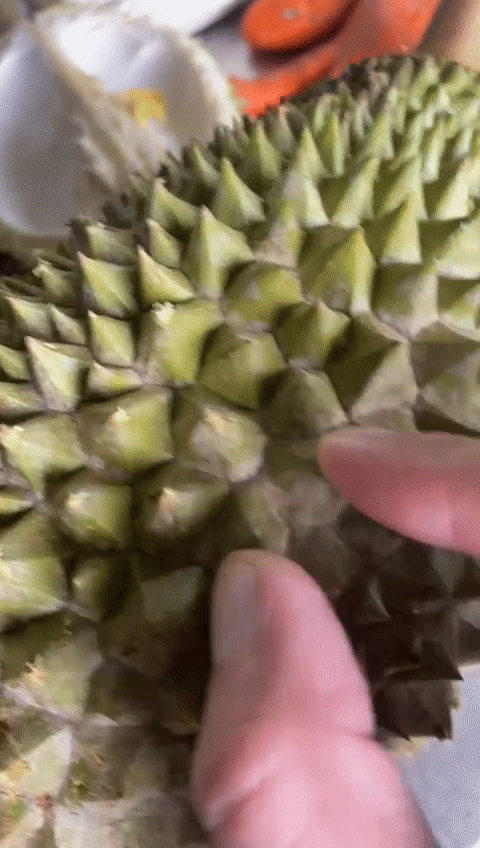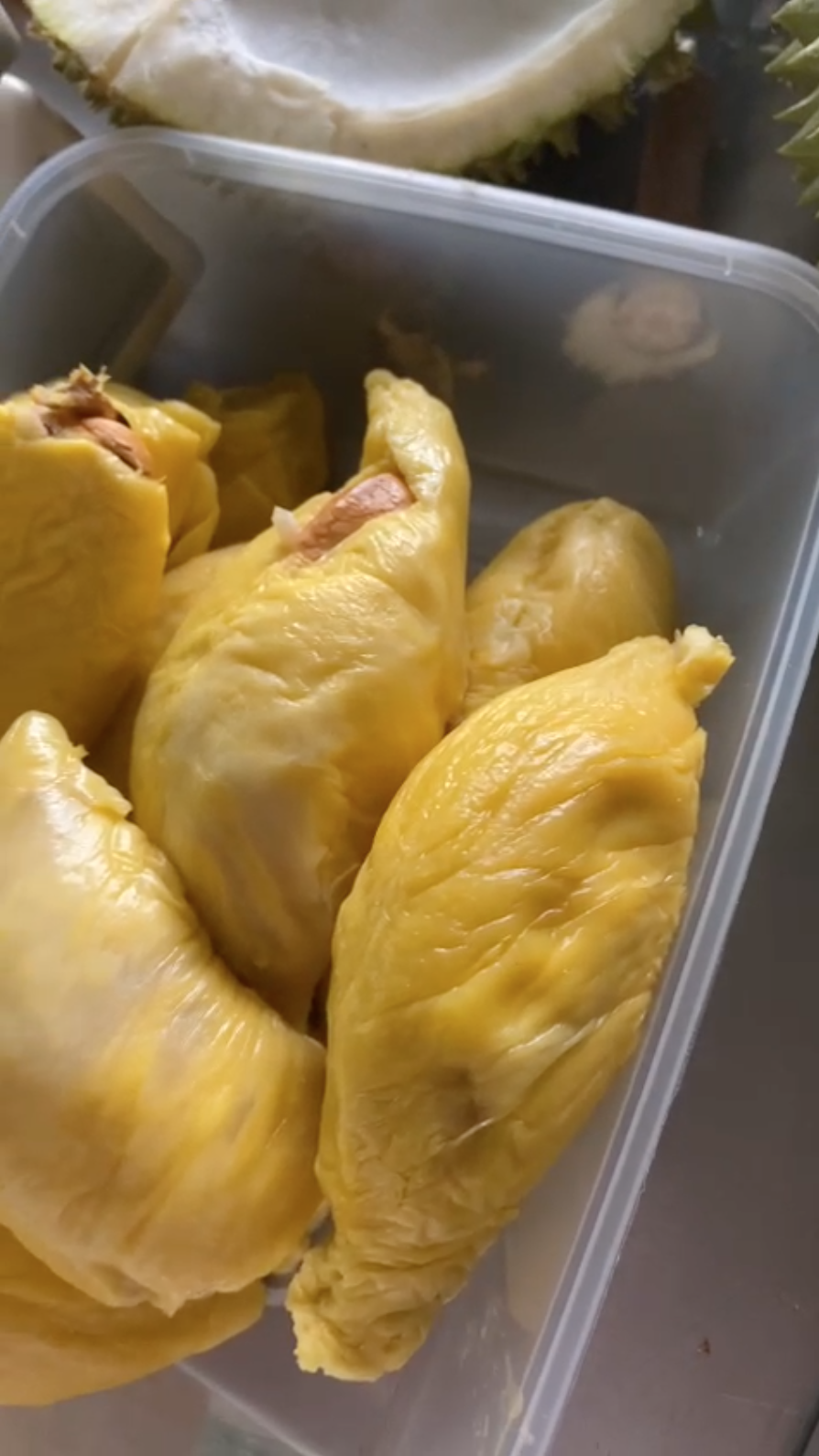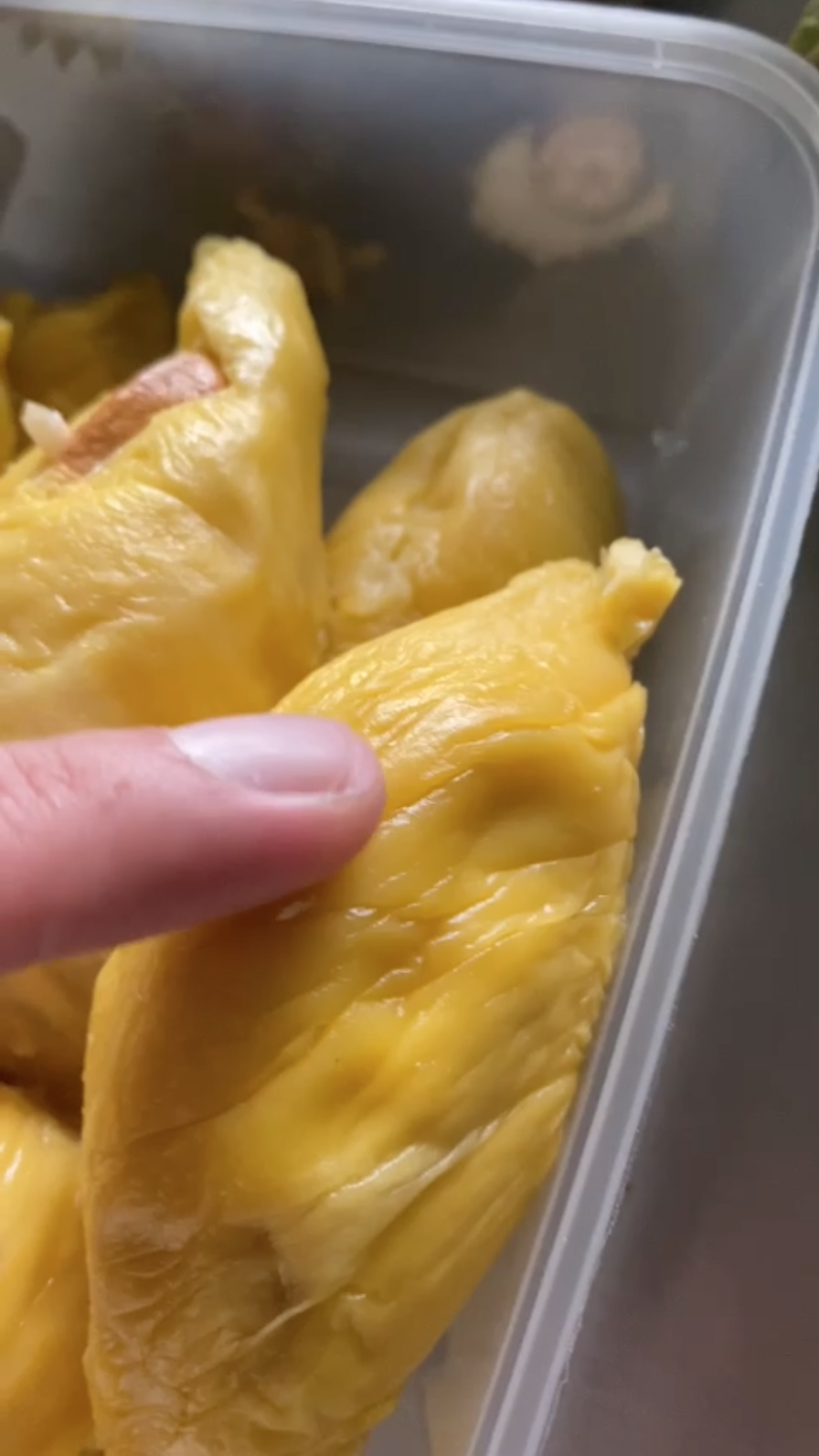Follow us on Telegram for the latest updates: https://t.me/mothershipsg
We're in the thick of durian season.
For some help in picking the best durians, we spoke to two durian sellers in Singapore you've probably heard of:
- Ben Yeo, SG Mao Shan Wang
- Kelvin Tan, 99 Old Trees
They've provided a variety of tips on what to look out for in the fruit's exterior and flesh, so these should (hopefully) come in useful whether you're buying the whole fruit or the readily packaged version.
Whole durians
1. Husk/exterior
Scraping at the stem should reveal a bright green interior, like so:
 Video courtesy of Ben Yeo
Video courtesy of Ben Yeo
This indicates that the durian is fresh, says Yeo, who specialises in Musang King. The actor/host learnt the tricks of the trade from a durian supplier friend before going into the business.
Another way of verifying its freshness is to gently pinch two of its spikes together; if they remain firm and unyielding, it's a pass.
 Stiff spikes. Video courtesy of Ben Yeo.
Stiff spikes. Video courtesy of Ben Yeo.
On the other hand, if the spikes are soft enough to reach for each other, it's probably not a good sign.
Next, Tan suggests choosing durians with a green or greyish husk, and avoiding those that look yellowish.
Tan is the director of 99 Old Trees, a durian shop he established in 2017.
Another piece of advice Tan gives is to avoid husks that have large cracks, though hairline cracks are usually unavoidable.
For stems, look out for ones that are taut and rigid, says Tan, as soft stems may indicate that the durians are old.
2. Smell
Instead of smelling the fruit from the bottom, Yeo suggests putting your nose near the centre of the durian instead.
This is because a durian is most pungent at its bottom, which may lead to a mistaken impression of it being more intense in flavour than it actually is.
The best way, however, is still to open it up for checking.
Otherwise, only experts are able to tell the taste from smell alone, Yeo explains.
Tan echoes the sentiment and tells us that smell is "not a very accurate measure," as our nose might become desensitised after spending some time in the store.
Buying packet durians
If you're buying packet durians, one way to tell if they're ripe is to look for "crumpled" flesh, Yeo tells us.
 Photo courtesy of Ben Yeo
Photo courtesy of Ben Yeo
Similarly, the colour of a Musang King should be a rich, distinct yellow for optimum ripeness. Anything too pale would mean that it's not at its peak yet.
Upon your (gentle) touch, the flesh should also be firm, with "skin" that doesn't break.
 Photo courtesy of Ben Yeo
Photo courtesy of Ben Yeo
Once the texture comes away "puree-like," you're looking at a watery durian that is no longer fit for consumption.
Similarly, Tan also advises customers to avoid durians that are "visibly wet". Go for dry and sticky flesh, and avoid picking durians that are dull or translucent.
Top image by @jimteo/Unsplash
If you like what you read, follow us on Facebook, Instagram, Twitter and Telegram to get the latest updates.
